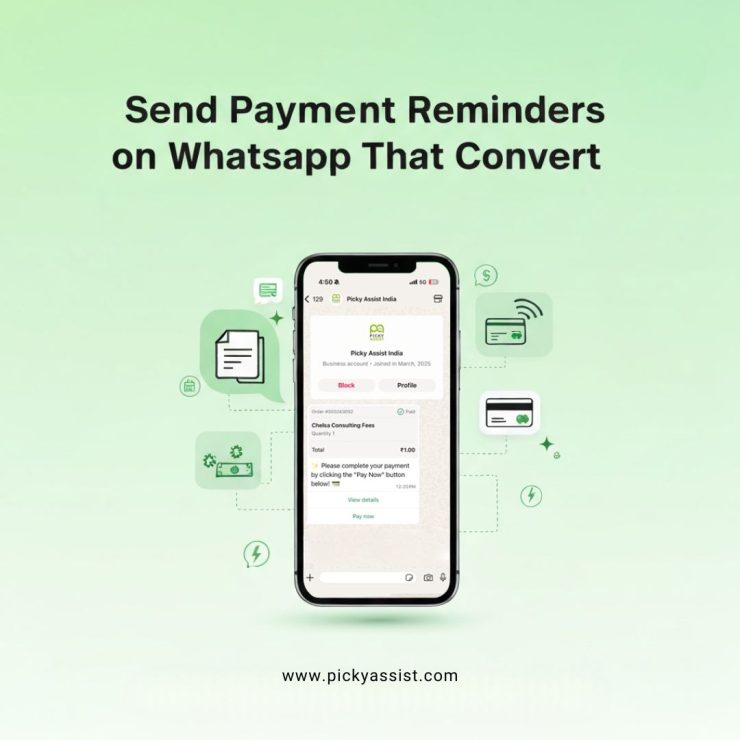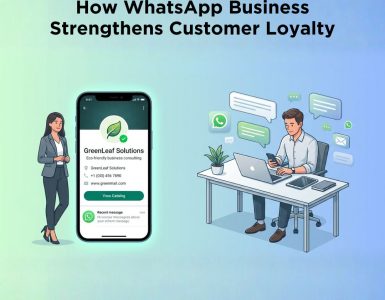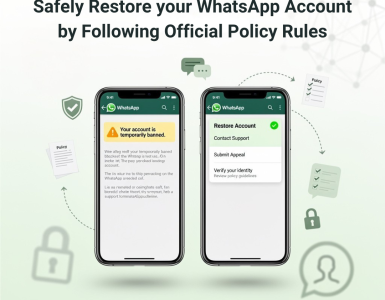Businesses need faster, more reliable ways to collect payments, and nothing works better than a well-crafted payment reminder message on WhatsApp. With customers spending most of their time on messaging apps, WhatsApp has become the most effective channel for sending reminders, following up on dues, and ensuring payments are completed on time.
Unlike emails that get ignored or phone calls that feel intrusive, WhatsApp reminders are instant, conversational, and customer-friendly. Whether you run an online store, provide subscription services, or manage a small business, sending payment reminders through WhatsApp dramatically improves response rates and reduces overdue invoices.
This guide covers everything you need to know, the do’s, don’ts, best practices, automation tips, and high-converting examples to help you send perfect messages every time.
Why a Payment Reminder Message on WhatsApp Works Better Than Email or SMS?
Using a payment reminder message on WhatsApp is now the gold standard for businesses. Here’s why:
- High open rates: WhatsApp has a 98% open rate, far higher than email or SMS.
- Faster replies: Customers respond 3–5× faster compared to traditional channels.
- Personalised experience: The conversational tone feels friendlier and less formal.
- Supports multiple formats: You can send buttons, payment links, documents, images, or invoices.
- Automation ready: Tools like Picky Assist allow businesses to automate follow-ups and reminders effortlessly.
This makes WhatsApp the perfect platform for sending reminders without sounding pushy.
Payment Reminder Message on WhatsApp: Do’s You Should Always Follow
To ensure your payment reminders are effective and customer-friendly, follow these essential do’s:
1. Be Clear About the Payment Details
Always mention the amount, due date, invoice number, and payment link. Customers value clarity and transparency.
2. Keep the Tone Friendly & Professional
Avoid sounding demanding. A polite, courteous message gets much better results.
3. Provide a Direct Payment Link
Reduce friction by sharing a link for UPI, card payment, or your payment gateway. The fewer steps, the better.
4. Use Buttons or Quick Replies
WhatsApp buttons like “Pay Now”, “Need Help”, or “Send Invoice Again” simplify customer actions.
5. Automate Follow-Ups
Set up automated reminders for:
- Before due date
- On due date
- After due date
- Final notice
Automation ensures you never miss a follow-up again.
6. Personalize the Message
Using the customer’s name and referencing their order or invoice increases trust and response speed.
7. Maintain Compliance
For businesses outside personal contacts, always follow WhatsApp Business API template rules for approved reminder messages.
Payment Reminder Message on WhatsApp: Don’ts You Must Avoid
A great reminder is just as much about what not to do. Avoid these mistakes:
1. Don’t Sound Threatening or Aggressive
Avoid harsh words or pressuring language. It harms customer relationships.
2. Don’t Send Too Many Messages
Spamming leads to frustration and increases the chance of being blocked.
3. Don’t Use Confusing or Vague Content
A message like “Please make your payment soon” is unclear and ineffective.
4. Don’t Share Payment Details Without Verification
Always double-check the invoice and customer details before sending.
5. Don’t Ignore Follow-Up Protocol
Send reminders at smart intervals, not randomly.
Exapmles of Free WhatsApp Payment Reminder Templates
Below are ready-to-use templates for different scenarios:
1. Friendly First Reminder
Hi {{name}}, this is a gentle reminder about your upcoming payment of ₹{{amount}} for Invoice #{{invoice_no}} due on {{date}}.
You can pay securely using this link: {{payment_link}}
Let us know if you need any assistance!
2. On the Due Date
Hello {{name}}, your payment of ₹{{amount}} for Invoice #{{invoice_no}} is due today.
Please complete the payment using the link below:
{{payment_link}}
Thank you!
3. Overdue Reminder
Hi {{name}}, our records show that Invoice #{{invoice_no}} for ₹{{amount}} is overdue.
Kindly make the payment at your earliest convenience: {{payment_link}}
If you’ve already completed it, please ignore this message.
4. Final Reminder
Hello {{name}}, this is the final reminder for your pending payment of ₹{{amount}} (Invoice #{{invoice_no}}).
Please pay here: {{payment_link}}
Contact us if you need help. Thank you for your prompt attention.
5. Subscription Renewal Reminder
Hi {{name}}, your subscription for {{plan_name}} renews on {{date}}.
Complete your renewal here: {{payment_link}}
Stay uninterrupted and enjoy full access!
6. EMI Payment Template
Hello {{name}}, your EMI of ₹{{amount}} for {{product_name}} is due on {{date}}.
Pay now using this quick link: {{payment_link}}
7. Service-Based Business Reminder
Hi {{name}}, your service fee of ₹{{amount}} for {{service_name}} is pending.
Please complete your payment here: {{payment_link}}
Thank you for your support.
How to Automate Every Payment Reminder Message on WhatsApp?
Instead of manually tracking reminders, modern businesses use automation platforms like Picky Assist to send reminders at:
- 3 days before due date
- 1 day before due date
- On due date
- 3 days after due date
- 7 days after due date
- Final notice
Benefits of Automating WhatsApp Payment Reminders:
- Zero manual follow-up
- Reduced overdue invoices
- Faster collections
- Better customer experience
- Personalized conversations at scale
Automation also ensures consistent messaging, accurate timing, and higher conversions.
Payment Reminder Message on WhatsApp: Best Practices for Higher Conversions
Here are proven strategies to improve payment completion rates:
Use short, simple sentences
People read WhatsApp messages quickly, clarity wins.
Send reminders during business-friendly hours
Recommended: 10 AM–7 PM.
Include a “Payment” button
Makes it easier for customers to confirm payment.
Add a PDF invoice
Helps customers verify the legitimacy of the reminder.
Offer multiple payment methods
UPI, credit card, debit card, Google Pay, and more.
Keep communication consistent
A structured reminder sequence increases the chance of payment by 60–80%.
Final Thoughts
Sending a well-structured payment reminder message on WhatsApp is one of the most powerful ways to streamline collections, reduce overdue invoices, and improve customer relationships. With the right wording, timing, and automation, businesses can achieve faster payments and better clarity, without sounding pushy or unprofessional.
WhatsApp reminders feel natural, conversational, and effortless for both the sender and the customer. Whether you’re a startup, freelancer, eCommerce brand, or enterprise, adopting WhatsApp-based reminders can transform your payment collection process.
FAQs on Payment Reminder Message on WhatsApp
1. What is the best time to send a payment reminder message on WhatsApp?
The ideal time is between 10 AM and 7 PM, when customers are most active on WhatsApp. Mid-mornings and early evenings see the highest response and payment completion rates.
2. How many reminders should I send for a single invoice?
A good sequence is:
- 3 days before due date
- 1 day before due date
- On the due date
- 3 days after due date
- Final reminder
This ensures consistent follow-up without overwhelming the customer.
3. Can I automate payment reminder message on WhatsApp?
Yes. Platforms like Picky Assist allow you to automate reminders based on due dates, invoice status, payment events, and customer behavior, reducing manual workload significantly.
4. Is it legal to send payment reminder message on WhatsApp?
Yes, as long as:
- The customer has opted in
- You use approved WhatsApp Business templates (for API accounts)
- The message content follows WhatsApp’s commerce and policy guidelines
5. Can I attach invoices or payment links in payment reminder message on WhatsApp?
Absolutely. You can send:
- PDF invoices
- Payment gateway links
- UPI payment links
- WhatsApp Pay (in supported regions)
This makes it easy for customers to pay instantly.
6. What tone should I use in a payment reminder message on WhatsApp?
Use a polite, respectful, and professional tone. Avoid demanding language. A friendly, supportive tone always leads to faster responses and fewer customer conflicts.







Add comment